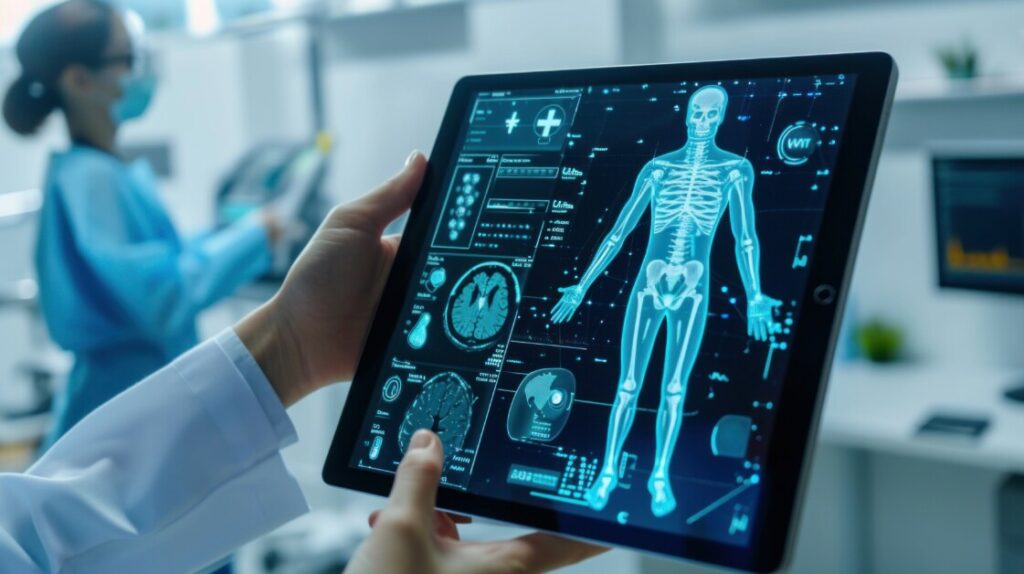In modern healthcare, the demand for accurate, real-time, and patient-friendly monitoring solutions has never been higher. Traditional invasive methods, while effective, often involve discomfort, increased risk of infection, and longer recovery times. Today, technology is transforming hospital care by enabling non-invasive health monitoring, a safer and more efficient way to track vital signs and diagnose conditions without disrupting tissues or skin.
From wearable sensors to AI-powered diagnostic tools, non-invasive technologies are helping medical professionals make faster decisions, reduce patient stress, and improve overall treatment outcomes. This article explores the key technologies driving this shift and the benefits they bring to hospitals and patients alike.
Understanding Non Invasive Health Monitoring
Non-invasive health monitoring evaluates body functions without disrupting tissues or skin. Unlike invasive methods, which may involve surgery or needles, non-invasive approaches offer significant benefits:
- Non-invasive methods are stress-free and minimize the risk of infections by avoiding skin penetration.
- More Frequent Monitoring: Healthcare providers can check patients regularly without causing discomfort.
Studies highlight the significance of non-invasive methods in proactive patient care, shifting healthcare towards prevention rather than reaction.
Non-Invasive Monitoring Technologies and Their Functions
Medical technology continues to evolve, with non-invasive health monitoring as a key advancement. This technology allows tracking of patients’ health without invasive procedures, promoting patient comfort and safety.
Key technologies in non-invasive monitoring include:
- Wearable Devices: Track vital signs like heart rate and oxygen levels.
- Wireless Monitors: Monitor health metrics wirelessly.
- Real-Time Vital Signs Monitoring Software: Instantly access patient data for improved critical care response.
Integrating these technologies enhances patient care, with real-time vital signs monitoring crucial for efficient data processing and presentation to healthcare teams.
Exploring Technologies: SEM Monitoring and Combination Vital Signs Monitors
Non-invasive techniques like SEM monitoring and combination monitors aid overall patient monitoring:
- SEM Monitoring: Detects changes beneath the skin, aiding in preventing pressure injuries.
- Combination Vital Signs Monitors: Simultaneously measure multiple health indicators, crucial in emergency settings.
These technologies lead to faster diagnosis and improved workflow for healthcare providers. Their extensive use can enhance patient outcomes and healthcare delivery.
Noninvasive Respiration Rate Monitoring
Monitoring respiration rates non-invasively is essential for healthcare providers. This method allows comfortable assessment of breathing, aiding in early diagnosis and effective treatment plans.
Benefits of noninvasive respiration rate monitoring include:
- Comfort and Safety: No invasive devices, reducing infection risks.
- Early Detection: Quick interventions prevent complications.
- Better Treatment Plans: Tailored care improves patient outcomes.
Overall Benefits for Patients and Healthcare Providers
Non-invasive health monitoring provides numerous advantages for patients and healthcare providers, enhancing healthcare experiences and service delivery efficiency.
Benefits for Patients
- Improved Experience: Positive hospital visits with noninvasive methods.
- Reduced Risks: Decreased chances of complications.
- Quicker Recovery: Faster healing without invasive procedures.
Benefits for Healthcare Providers
- Efficient Monitoring: Continuous, real-time data for better care management.
- Streamlined Operations: Optimized resources for direct patient care.
- Enhanced Decision-Making: Informed treatment decisions for better patient outcomes.
Future Trends and Encouraging Adoption
Non-invasive health monitoring is revolutionizing healthcare, offering improved patient care and efficiency. Emerging trends and steps to boost adoption play a significant role in this transformation.
Emerging Trends in Non-Invasive Monitoring
- Advanced Sensors and Wearables: Smarter devices for continuous vital signs tracking.
- Integration of AI and Machine Learning: Enhancing preventative care through data analysis.
- Wireless Technology: Real-time health data communication.
- Telemedicine and Remote Monitoring: Consistent patient tracking even outside hospital settings.
Encouraging Adoption
To maximize the benefits of non-invasive technologies, hospitals should consider these steps:
- Education and Training: Equip staff with knowledge of new technologies.
- Cost-Benefit Analysis: Showcase savings from improved care.
- Patient Advocacy and Feedback: Highlight patient benefits for wider adoption.
- Policy Support: Institutional policies promoting adoption.
By embracing emerging trends and encouraging widespread adoption, hospitals can enhance patient outcomes and operational efficiency, ushering in a new era of advanced healthcare solutions.
Caroline is doing her graduation in IT from the University of South California but keens to work as a freelance blogger. She loves to write on the latest information about IoT, technology, and business. She has innovative ideas and shares her experience with her readers.






